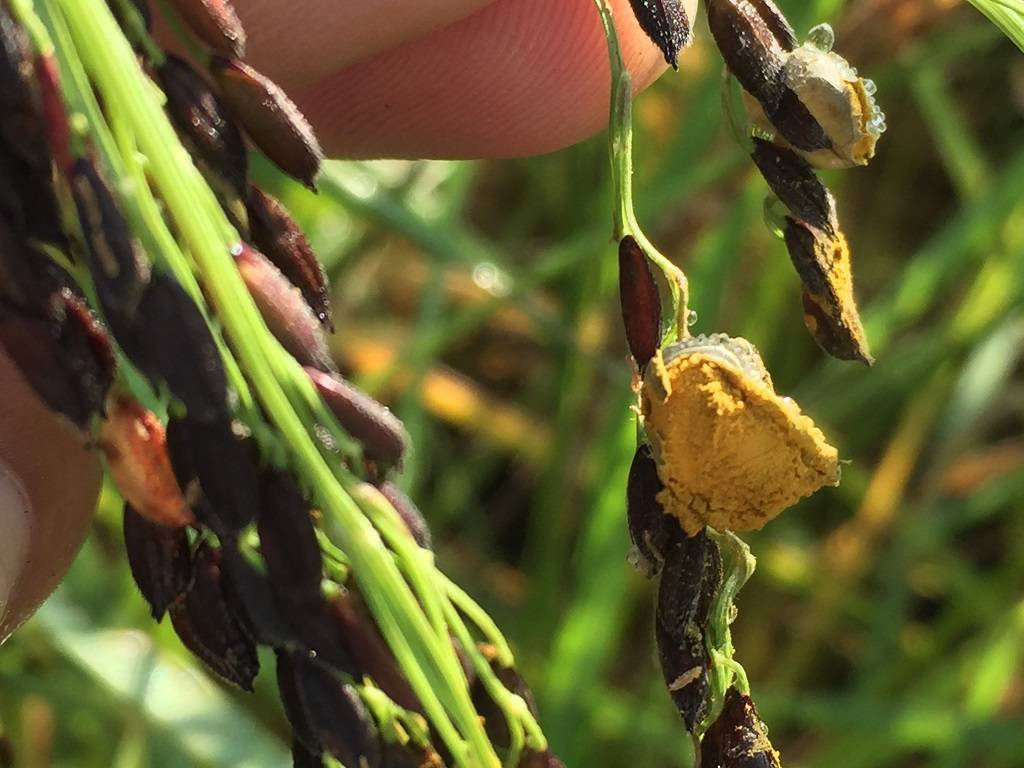
False smut is caused by the fungus Ustilaginoidea virens and is also known as Lakshmi disease or Oothupathi disease of rice. This disease was reported in Santkabir, Basti, Siddhartha Nagar, Gorakhpur, Maharajganj, Kushinagar,
Devaria and Ayodhya district of U.P in the year 2019-20 year; as a result, it caused significant damage in the 2021–22 Kharif season in Uttar Pradesh as well as neighboring rice-growing states with favourable weather conditions. This disease causes reduction in grain weight and also reduces seed germination.
Symptoms
Individual rice grains that are infected with false smut transform into a mass of spore balls. When these spore balls mature, they change from orange to yellowish green to greenish black. A panicle typically has only a few sick grains while the rest are healthy.
When the ovary is destroyed, the disease affects the early flowering stage of the rice crop. The second stage of infection start when the spikelet nearly reaches maturity.
Additionally, it can result in a 35% reduction in seed germination. The disease can be severe in wet weather, and losses might reach 25%. In India, a yield loss of 7-75% was observed.
Disease Cycle
The disease can occur in areas with high relative humidity (>90%), temperatures between 25 and 35 °C and moderate rainfall during the flowering season.
Additionally, disease growth is favoured by soil with high nitrogen content. The fungi can spread from plant to plant by the wind.
How to Control & Manage False Smut Disease
-
Use of disease-free seeds that are selected from healthy crop.
-
Hot water treatment of seeds at 52°C for 10 mins
-
Removal and proper disposal of infected plant debris.
-
To avoid the fungal infection, spraying 2.5 g/liter of copper oxychloride or 1.0 ml/liter of propiconazole at the boot leaf and milky phases will be more effective.
-
Seed treatment with 2.0g/kg of carbendazim.
-
Spray Hexaconazole @ 1ml/lit or Chlorothalonil @ 2g/lit throughout the tillering and pre flowering Stage.










